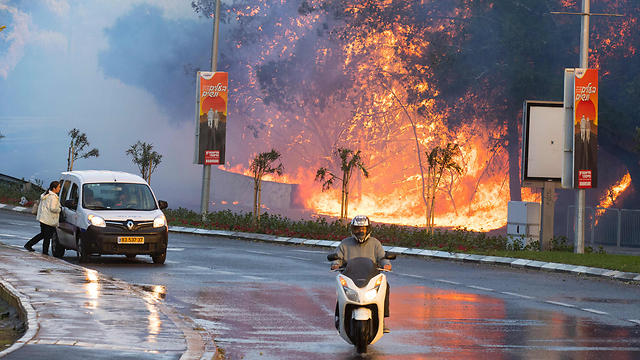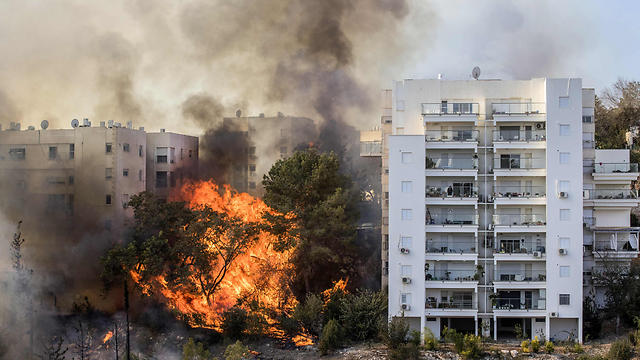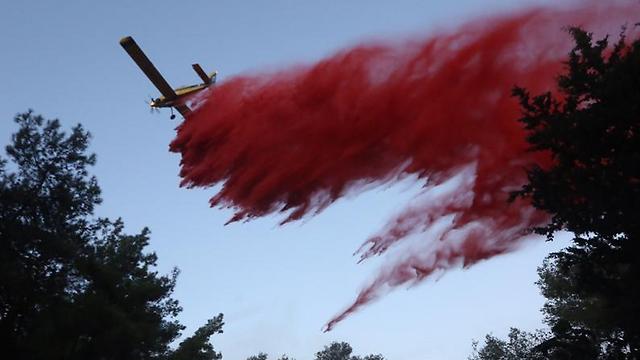America paid Iran $1.7 billion in cash—funds that by law were not to be released unless and until Iran paid what it owed to American victims of its terrorism.
Mosaic: On the morning of January 17, 2016, President Obama declared that this was “a good day, because, once again, we’re seeing what’s possible with strong American diplomacy.”
The Iran nuclear deal had been implemented the day before—an example, the President said, of his “smart, patient, and disciplined approach to the world.” Now Iran was releasing five American hostages, the result of the administration’s “tireless” efforts. “On the sidelines of the nuclear negotiations,” the president explained, “our diplomats at the highest level, including Secretary [of State John] Kerry, used every meeting to push Iran to release our Americans.” In return for that gesture, the president continued, he was making a “reciprocal humanitarian gesture”: namely, clemency for seven Iranians imprisoned or awaiting trial for criminal violations of American sanctions. Later it was announced that the U.S. had also dropped outstanding warrants against another fourteen Iranians.
The president then added something else: with the nuclear deal implemented, and the hostages released, “the time was right” for “resolving a financial dispute that dated back more than three decades.” That dispute involved an Iranian claim regarding money advanced by the government of the Shah for military equipment that Washington did not deliver after the 1979 revolution. Now, the president asserted, we were returning Iran’s “own funds,” including “appropriate interest,” but “much less than the amount Iran sought.” The savings, he said, came potentially to “billions”—a figure quantified by his press secretary as “up to $6 billion or $7 billion” in a “very good deal for taxpayers.” In other words, now that the larger issues had been resolved, the U.S. was simply issuing a long-delayed refund to Iran, and in the process saving Americans a significant amount of money.
The president’s statement, however, omitted a great deal of relevant information. The president was returning $400 million in Iran’s “Foreign Military Sales” (FMS) account with the Pentagon, plus $1.3 billion in interest, but he failed to mention that in 1981, when Iran filed its claim before the Claims Tribunal at The Hague, the U.S. had responded with a counterclaim for $817 million for Iran’s violations of its obligations under the FMS program. In 2016, with both the claim and the counterclaim still pending, it was possible that Iran owed billions of dollars to the U.S., not the reverse.
Nor did the president mention the Victims of Trafficking and Violence Protection Act, signed by President Bill Clinton in 2000 and stipulating that Iran’s FMS account could not be refunded until court judgments held by the U.S. government against Iran for damages from terrorist acts against American citizens were resolved to America’s satisfaction. Those judgments, including interest accumulated between 2001 and 2016, totaled about $1 billion. The president did not explain how, under the 2000 law, with those judgments still outstanding, he could pay Iran anything at all.
Nor did the president mention that his “refund” to Iran was being paid in untraceable European cash, a fact discovered by reporters seven months later. He would then contend that, in light of the sanctions on banking transactions with Iran, “we had to give them cash.” But the sanction regulations expressly authorize bank payments to settle Iran’s claims at The Hague, as Michael Mukasey, the former U.S. attorney general, later testified to Congress, adding that there was “no legitimate reason why [Iran] should want cash other than to pursue terrorism.” Indeed, the Hizballah International Financing Prevention Act, passed by Congress in December 2015, had resulted in Tehran’s needing significantly more cash to continue funding its terrorist organization in Lebanon, Syria, and elsewhere.
In a February 3 letter, Ed Royce, the chairman of the House Foreign Affairs Committee, asked the administration to provide the legal basis for paying Iran’s claim, as well as a specific computation of the interest paid. He repeated the request in a June 1 letter, adding that according to information provided to him by the Congressional Research Service, the Hague tribunal paid 10-percent simple interest on such claims. Computed at that rate, and before considering the U.S. counterclaim under the FMS and the terror judgments still outstanding, Iran’s total claim on the FMS account was virtually identical to the $1.7 billion the administration paid, with no “billions” in savings.
To date, the administration has released no legal analysis to support its payment, no evaluation of the U.S. counterclaim, no text of the settlement agreement, no computation of the interest, no credible explanation for issuing the payment in cash, and no document showing the approval of the attorney general as required for issuing such a payment. For months, the administration hid important facts—including how the settlement was paid—even in response to direct congressional inquiries.
The $1.7-billion payment thus appears to have been a ransom, just as an Iranian general claimed it was at the time—a huge cash payment to accompany the lopsided exchange of 21 Iranians, duly charged or convicted under American law, for five American hostages who had been seized by Iran and held on fabricated charges in secret proceedings.
As for the outstanding claims against Tehran for the terror judgments, the administration has asserted that these were satisfied “by securing a favorable resolution on the interest owed to Iran.” What favorable resolution? In effect, the settlement cost the United States $2.7 billion—the $1.7 billion in cash plus about $1 billion in forgiven court judgments—to pay a claim that was not yet due, may not in fact have been owed, and may have been more than offset by the U.S. counterclaim that exceeded Iran’s own claim.
And therein lies the most troubling aspect of President Obama’s settlement, which is neither its amount nor its appearance as ransom but the fact that Iran succeeded in having U.S. taxpayers bear the cost of the damages owed by Iran for committing despicable acts of terrorism against them. To understand the magnitude of what the President did on January 17, some background is necessary.
In April 1995, Alisa Flatow, a twenty-year-old Brandeis University honors student spending her junior year abroad in Israel, boarded a bus in Jerusalem bound for a popular resort area in Gaza. It was the height of the “peace process,” celebrated the year before with Nobel Peace prizes. As the bus entered Gaza, a van filled with explosives slammed into it. Eight people, including Alisa, were killed, and more than 40 others were injured. The attack was carried out by a faction of Islamic Jihad controlled, financed, and directed by the highest levels of Iran’s government.
Alisa’s father, Stephen M. Flatow, filed suit in U.S. federal court against Iran, pursuant to legislation Congress had enacted permitting such suits against state sponsors of terrorist attacks on American citizens. A federal district court issued a 35-page opinion, Flatow v. Islamic Republic of Iran (1998), awarding a total of $20 million in compensatory damages as well as punitive damages, with both types of damages specifically authorized by the U.S. Congress. The court noted that expert testimony had “detailed an annual expenditure [by Iran] of approximately $75 million for terrorist activities” and that Iran “is so brazen in its sponsorship of terrorist activities that it carries a line item in its national budget for this purpose.” Accordingly, the court awarded punitive damages of $225 million—three times Iran’s publicly-disclosed annual terrorist budget. It was the minimum amount the expert had testified was necessary to have a significant deterrent effect, which was what Congress had intended to achieve in its authorizing legislation.
Over the next four years, a series of cases held Iran liable for similarly horrific terror operations. Cicippio v. Islamic Republic of Iran (1998) involved Joseph Cicippio (comptroller of the American University of Beirut), David Jacobsen (CEO of the medical center there), and Frank Reed (who operated two private schools in Beirut)—all abducted by Hizballah, an entity the court found was “sponsored, financed, and controlled by Iran.” Jacobsen had been chained and blindfolded for eighteen months; Reed had been held blindfolded or in darkness for more than three-and-a-half years; Cicippio had been held for over five years, chained in scorpion-infested cells and randomly beaten throughout his captivity. The court awarded them a total of $65 million in compensatory damages.
Anderson v. Islamic Republic of Iran (2000) involved Terry Anderson, chief Middle East correspondent for the Associated Press, who was kidnapped in Beirut by Hizballah and held shackled in filthy conditions for nearly seven years, fed only bread and water. The court again found Iran responsible, and awarded $41.2 million in compensatory damages and $300 million in punitive damages.
Eisenfeld v. Islamic Republic of Iran (2000) was brought by Leonard Eisenfeld for the death of his son Matthew, a twenty-five-year-old Yale graduate studying at the Jewish Theological Seminary in Israel, and by Arline Duker for the death of her twenty-year-old daughter, Sara, a Barnard College graduate enrolled in a program at the Hebrew University. They had been on an Israeli bus, en route to visit the archeological site at Petra, Jordan, when a passenger—acting under directions from a Hamas official funded and trained by Iran—detonated a bomb that destroyed the bus and killed them and others. The court awarded $22.5 million in compensatory damages and $300 million in punitive damages.
In still other cases, Iran was held legally responsible for the kidnapping, torture, and death of CIA station chief William Buckley in Beirut; the kidnapping of Father Lawrence Jenco, the director of Catholic Relief Services in Beirut, held for 564 days in conditions described by the court as “little better than [for] a caged animal”; the kidnapping of Thomas M. Sutherland, the dean of Agricultural and Food Sciences at the American University of Beirut, tortured for more than six years; the murder of Petty Officer Raymond Wagner in the 1983 car bombing of the American embassy in Beirut; the murder of Petty Officer Robert Stethem, beaten during the hijacking of TWA Flight 847, his body dumped on the tarmac, and the holding of nine other American hostages on that flight; and many other hostage-takings, with one court noting that Tehran “virtually directed the terms and conditions under which hostages would be held or released.”
In all, sixteen cases were decided against Iran by courts in the United States between 1998 and 2004, with awards of compensatory damages totaling some $400 million and punitive damages totaling $3.5 billion.
Of course, the problem faced by each victorious plaintiff was collecting the judgment. Stephen Flatow, after unsuccessfully seeking to have the damages paid out of various Iranian assets held in the United States, learned of the $400 million in the FMS fund. The Clinton administration had supported the legislation that allowed suits such as Flatow’s, but then strenuously opposed any effort to have the judgments satisfied from that fund. In its 1999 brief in federal court, the administration stated that the U.S. had a $817-million counterclaim against Iran, that the “current cash balance in Iran’s FMS program account [was] about $400 million,” and that “It is unknown how much, if any, of that amount will be owed to Iran by the United States until the claims before the [Hague] Tribunal are resolved” (emphasis added).
The court rejected Flatow’s contention that the FMS funds were the property of Iran, which could satisfy his judgment, on the grounds that “the United States does not share [his] characterization of these U.S. Treasury funds as ‘Iranian property.’” The court held instead that the FMS fund was U.S. property.
With Flatow’s subsequent appeal pending, Congress and the Clinton administration agreed on legislation directing the U.S. Treasury to pay the American holders of terror judgments against Iran for the amount of their compensatory damages plus 10 percent of their punitive damages, up to the amount in the FMS fund. The law subrogated the United States—meaning that the terror judgments became direct U.S. government claims against Iran to the extent the Treasury had paid them. Finally, the law included a provision to ensure that Iran would ultimately have to bear the cost of those payments: “no funds shall be paid to Iran . . . from the [FMS] fund until such subrogated claims have been dealt with to the satisfaction of the United States.”
Sixteen years later, with the $400 million still held by the U.S. government, and with no payments by Iran of a single cent of any of the sixteen court judgments against it, President Obama nevertheless gave the $400 million in the FMS account to Iran, plus interest. His statement that he was merely refunding Iran’s “own funds” directly contradicts the court’s determination in 1999. Indeed, since he made no mention of “resolving” the unpaid terror judgments in his January 17 statement, it is reasonable to conclude that the president simply ignored the 2000 statute as well.
January 17, 2016, was thus very far from “a good day . . . [for] strong American diplomacy.” It was a day of extraordinary diplomatic deception, practiced not against Iran—which knew exactly what the administration was doing—but against the American people, who were intentionally kept in the dark by the administration about critical aspects of the deal. President Obama paid Iran $1.7 billion that may not have been owed; paid it in cash—the currency of international terror; did not tell the American people he had relieved Iran from longstanding court judgments; did not add the cost of those judgments to the $1.7 billion payment that he announced; and did not faithfully execute the 2000 law—all the while congratulating himself on his accomplishment and claiming he had saved the U.S. billions.
The president’s actions with respect to the lawsuits won by American victims of Iranian terror, after years of litigation, stand in stark contrast to the resolution of the court cases concerning Libya’s terrorism, including the 1988 Pan Am 103 bombing over Lockerbie, Scotland. In 2008, Libya sought to re-establish relations with the United States, but Congress and the State Department blocked action until Libya satisfied the terror claims of American citizens against it. Libya agreed to pay and did pay the U.S. $1.5 billion to resolve those claims. Nothing of the sort accompanied the seemingly endless negotiations with Iran over the nuclear deal, as the administration made concession after concession to obtain it.
January 17, 2016 was in fact a shameful day in the history of American diplomacy. The only question is which aspect was most shameful: the craven abandonment of American claims against the Islamic Republic of Iran for past terrorism, the provision of a huge amount of cash enabling it to engage in future terrorism, the systematic mendacity about the process and the willful failure to inform the American people of everything that had been done, or the underlying policy of appeasing Iran that precipitated both the process and its cover-up.
What happened on January 17, 2016 was much worse than paying ransom.
Pope Francis at the Vatican in 2014 with Presidents Shimon Peres of Israel, left, and Mahmoud Abbas of the Palestinian Authority. Credit Franco Origlia/Getty Images
 Former U.S. president Jimmy Carter delivers a lecture on the eradication of the Guinea worm, at the House of Lords, February 3, London. Carter has called for Barack Obama to recognize the State of Palestine. Eddie Mullholland-WPA Pool/Getty
Former U.S. president Jimmy Carter delivers a lecture on the eradication of the Guinea worm, at the House of Lords, February 3, London. Carter has called for Barack Obama to recognize the State of Palestine. Eddie Mullholland-WPA Pool/Getty 








